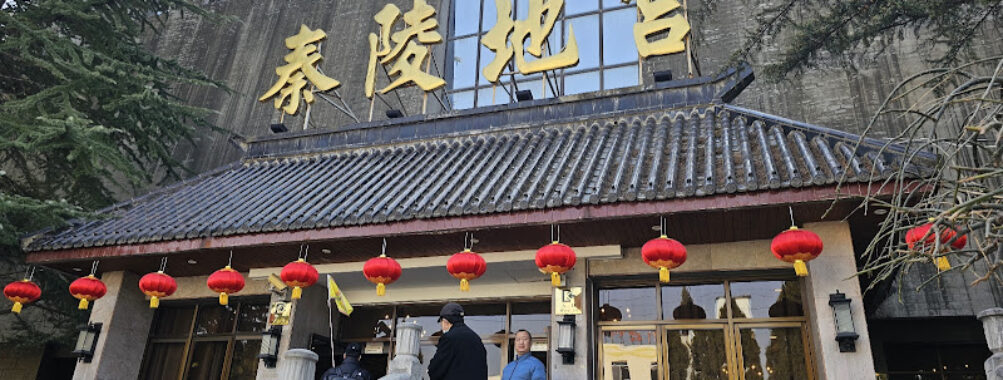
Underground Palace of the Emperor Qinshihuang Mausoleum
Table of Contents The Underground Palace of the Emperor Qinshihuang Mausoleum, lying beneath the quiet fields just outside Xi’An in Shaanxi province, holds layers of ancient Chinese history that still manage to surprise even the most seasoned travelers. To think this entire complex—hidden underground for over two thousand years—served as the eternal resting place of the first emperor who unified China, Qin Shi Huang, is mind-boggling. The Emperor, once the mighty ruler who initiated construction of the Great Wall and standardized the empire’s scripts and systems, devoted enormous resources to creating a grand mausoleum that mirrored his imperial realm in the afterlife. When archaeologists first uncovered fragments of this colossal tomb complex in the 1970s, the world was simply stunned. The discovery of the Terracotta Army—those thousands of life-sized soldiers, horses, and chariots meticulously arranged in battle formation—changed how people understood ancient Chinese craftsmanship and beliefs about life after death. Each terracotta soldier seems to carry its own personality, from the wrinkles near their eyes to the armor strapped across their chests. Looking at them, you almost feel they might blink any second. While the main burial chamber of the emperor remains sealed to this day, out of concern for preserving what lies within, the Underground Palace is believed to be an extraordinarily vast space filled with treasures, rivers of liquid mercury, and replicas of the empire Qin Shi Huang once ruled. Historic records describe the tomb as a miniature cosmos—a universe built to ensure the emperor’s everlasting reign—even in death. Visitors wandering through the museum complex today will sense not only the immensity but also the mystery of the site. And it’s not just about the numbers—though eight thousand soldiers, hundreds of horses, and dozens of chariots are nothing short of astonishing—it’s about the silence that fills the chambers, the kind of stillness that makes you instinctively whisper. You might see families marveling at the clay faces, children trying to spot the archer whose expression seems the most determined. Others stand quietly, perhaps reflecting on what it must have felt like to rule an empire that shaped the course of Chinese civilization. There’s a palpable sense of awe here. Even those who come expecting a straightforward museum experience are struck by the emotional punch of realizing how long these figures have guarded their emperor. Visiting the Underground Palace isn’t just another sightseeing stop; it feels almost like attending an ancient ritual that continues to this very day. If possible, visiting in spring or autumn offers the most enjoyable experience. Between March to May, the temperatures are pleasantly mild, perfect for exploring both the indoor exhibits and the wide outdoor fields surrounding the mausoleum. The autumn months from September to November carry that crisp, golden kind of air that somehow heightens the atmosphere of ancient majesty. Summer tends to be quite hot and crowded, particularly around midday, so an early morning visit is usually best if that’s when your trip falls. Winters are cold here, but the upside is thinner crowds, giving you time to linger quietly in front of the soldiers without feeling rushed. If you ask me, winter mornings have a special charm—cool mist drifting over the burial mounds can make the scene almost otherworldly, as if Qin Shi Huang’s spirit might be nearby, still overseeing his empire. Travelers generally begin their journey in the city of Xi’An, the ancient capital once known as Chang’an during the height of Chinese imperial dynasties. The mausoleum lies about 40 kilometers to the east of the city, in the Lintong District. From Xi’An’s city center, there are several convenient options to reach the Underground Palace. Most visitors choose to take a direct bus or join one of the cultural day tours departing from Xi’An Railway Station. The bus ride takes roughly an hour, winding through the outer suburbs and into the countryside where the majestic museum complex opens up in view. Taxis or private hire cars are also available, which is handy if you prefer setting your own pace or visiting nearby sites like the Hot Springs of Huaqing. For those more adventurous—yes, some of us still prefer some freedom—a rented bicycle or scooter can work too, giving you the thrill of the open Chinese landscape as you make your way toward this UNESCO World Heritage Site. Whichever route you take, arriving early pays off; the air feels calmer, the shadows still soft, and the complex less busy. Having visited Xi’An a few times myself, I’ve learned a few lessons the hard way—like wearing shoes that can handle a full day’s walking (those exhibit halls are vast!). So here are a few practical and not-so-obvious tips for a visit that’s both smooth and meaningful. Visiting the Underground Palace of Emperor Qin Shi Huang’s Mausoleum is more than a sightseeing checklist item; it’s stepping into a dialogue with the past. Standing among thousands of terracotta warriors silently guarding their emperor’s tomb, you feel an unspoken connection stretching across more than two millennia. Maybe it’s the realization that this ancient emperor’s pursuit of immortality actually worked—not through physical life, but through the monument he left behind. And that’s something that stays with you long after you leave the grounds. Don’t rush it. Take your time here—it’s one of those places where every corner holds a whisper from China’s earliest empire, waiting patiently for you to listen.Description
Key Features
Best Time to Visit
How to Get There
Tips for Visiting
Location
Places to Stay Near Underground Palace of the Emperor Qinshihuang Mausoleum
Find and Book a Tour
Explore More Travel Guides
No reviews found! Be the first to review!